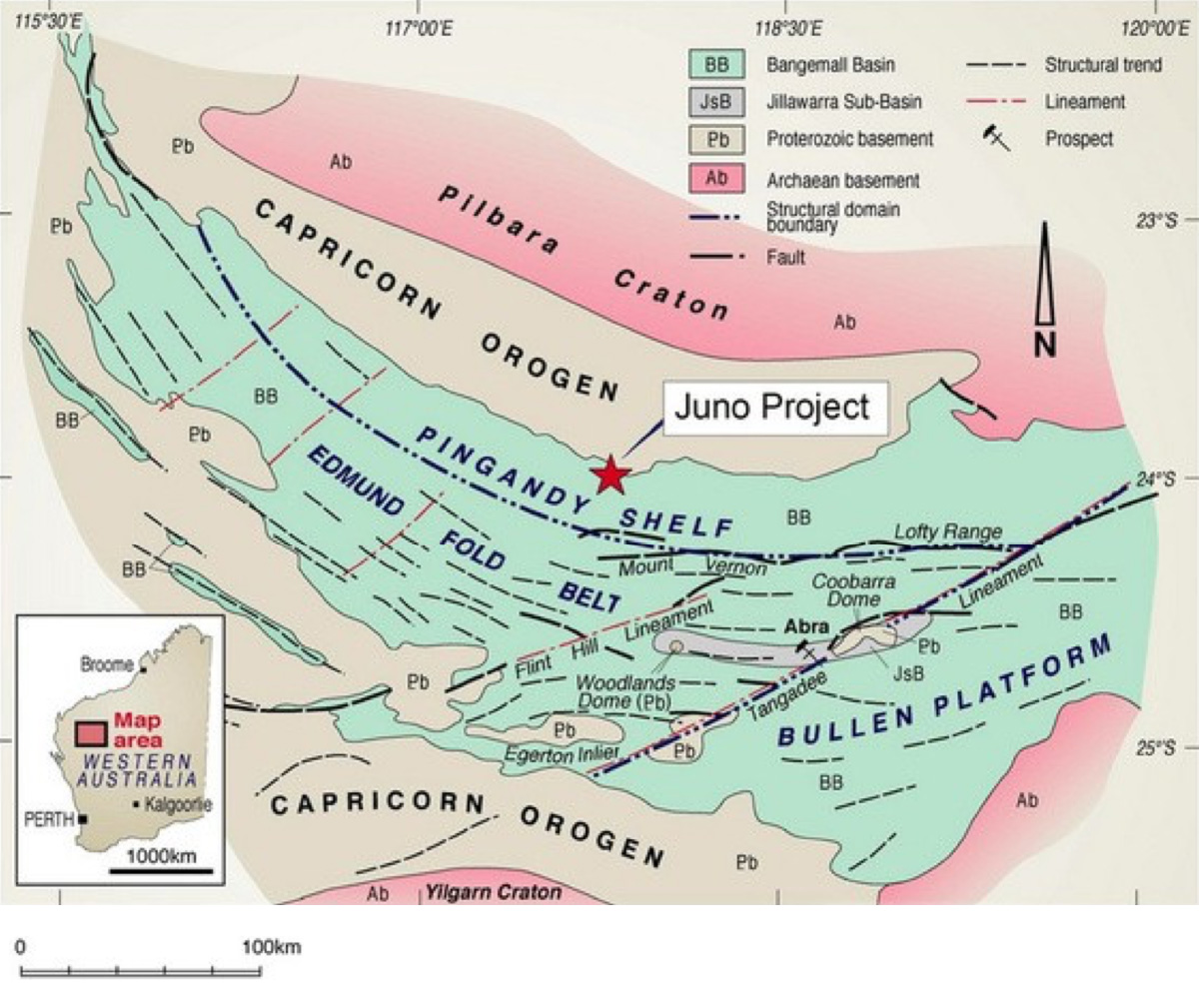An airborne magnetic survey which was carried out in the early 90s identified the Juno target. This was followed up by ground based magnetic and gravity surveys which were completed in the mid 1990s. This work was carried out by Australian companies Newcrest Mining and Pasminco.
Pasminco recognised the coincident nature of the Juno magnetic and gravity features and applied an Iron Oxide Copper Gold (IOCG) model. IOCG deposits are large and often display coincident magnetic and gravity signatures.
Pasminco modelled the geophysical data and planned a single drillhole to test the target – HD1
HD1 failed to intersect the source of the magnetic and gravity feature as it was poorly sited. The hole also failed to achieve target depth due to the small capacity of the drilling equipment.
However, HD1 intersected rocks which displayed thermal alteration and disseminated sulphide mineralisation suggesting close to source – skarn type features as were seen at Havieron.
Follow up work in the early 2000s by Udu Resources consisted of re-evaluating Juno as an IOCG target. Udu conducted a limited ground Electro Magnetic survey over a part of the Juno target which was successful in detecting a strong conductor. However, the aerial extent of the survey was insufficient relative to the size of the Juno target. Udu also drilled several drillholes UHC1-4 to test the target. All holes failed to penetrate the surface rocks due to the limited capacity of the drilling equipment.
Since the early 2000s there has been little to no work carried out in the Juno area. Callum Baxter applied for the current licence in 2022 and the licence was granted in 2023.
Historical data from the 90s and early 2000s is poorly constrained and more modern surveys are required to better locate and ‘see’ the target using up to date modelling techniques, as used in the Havieron discovery.






